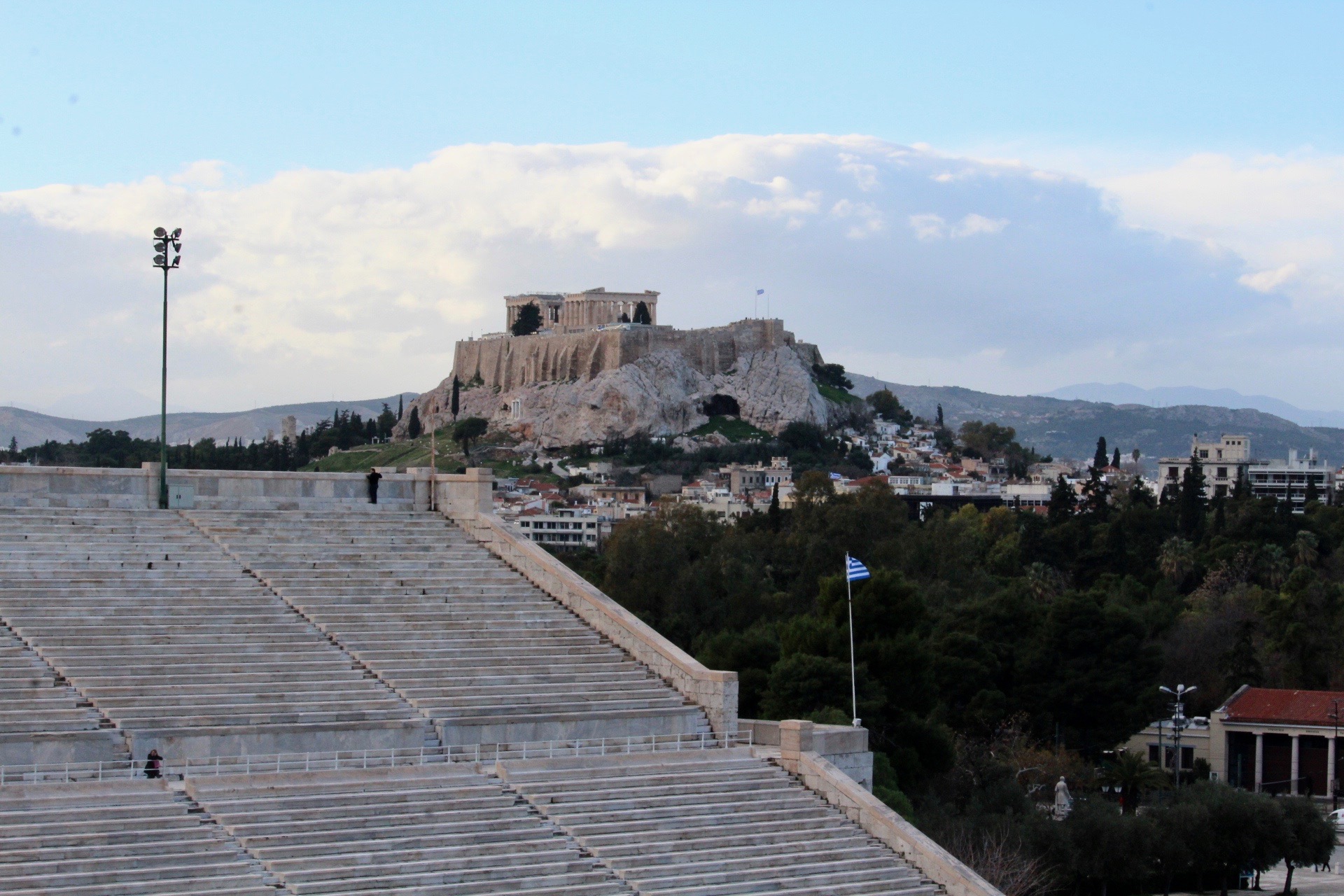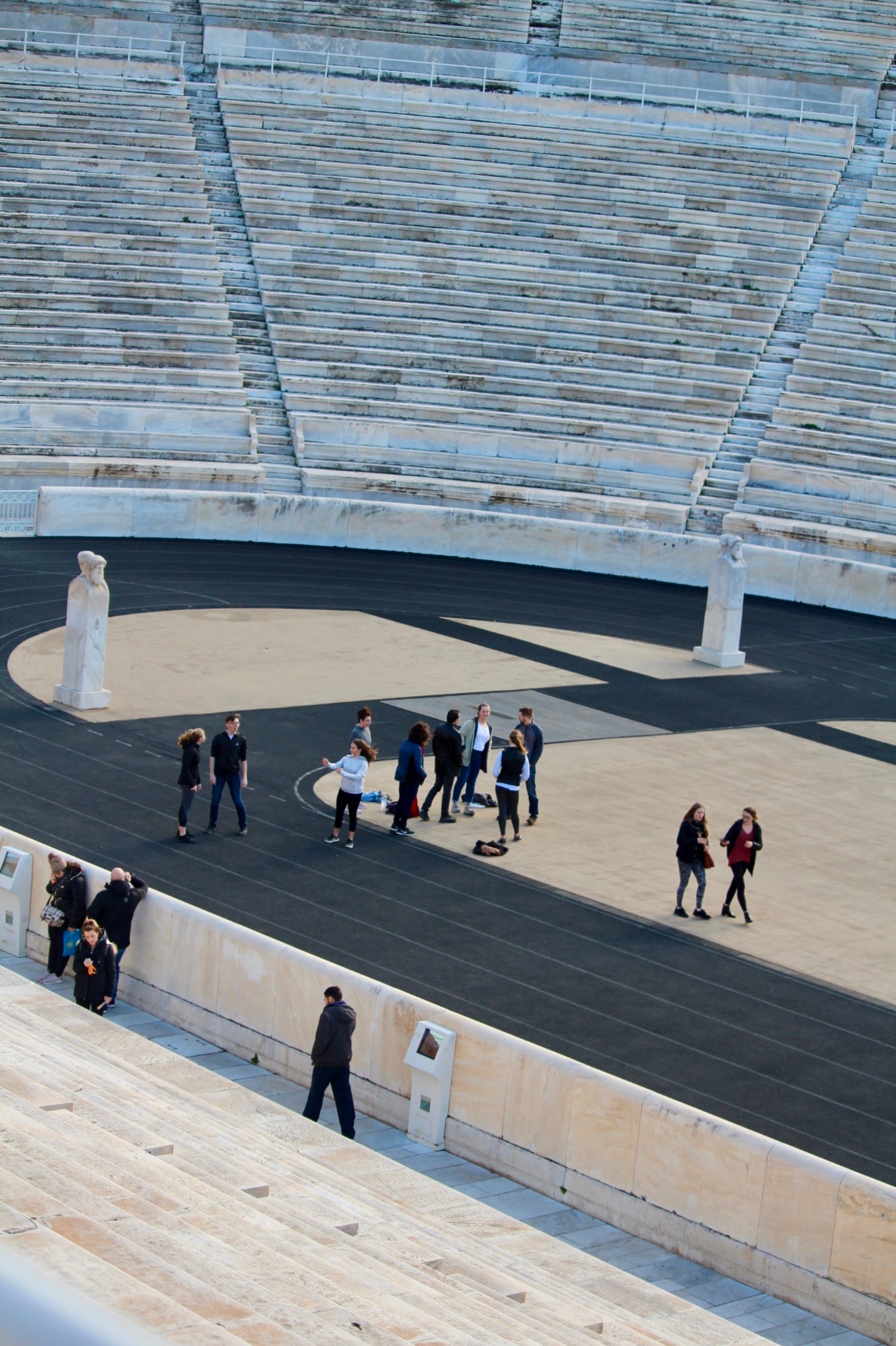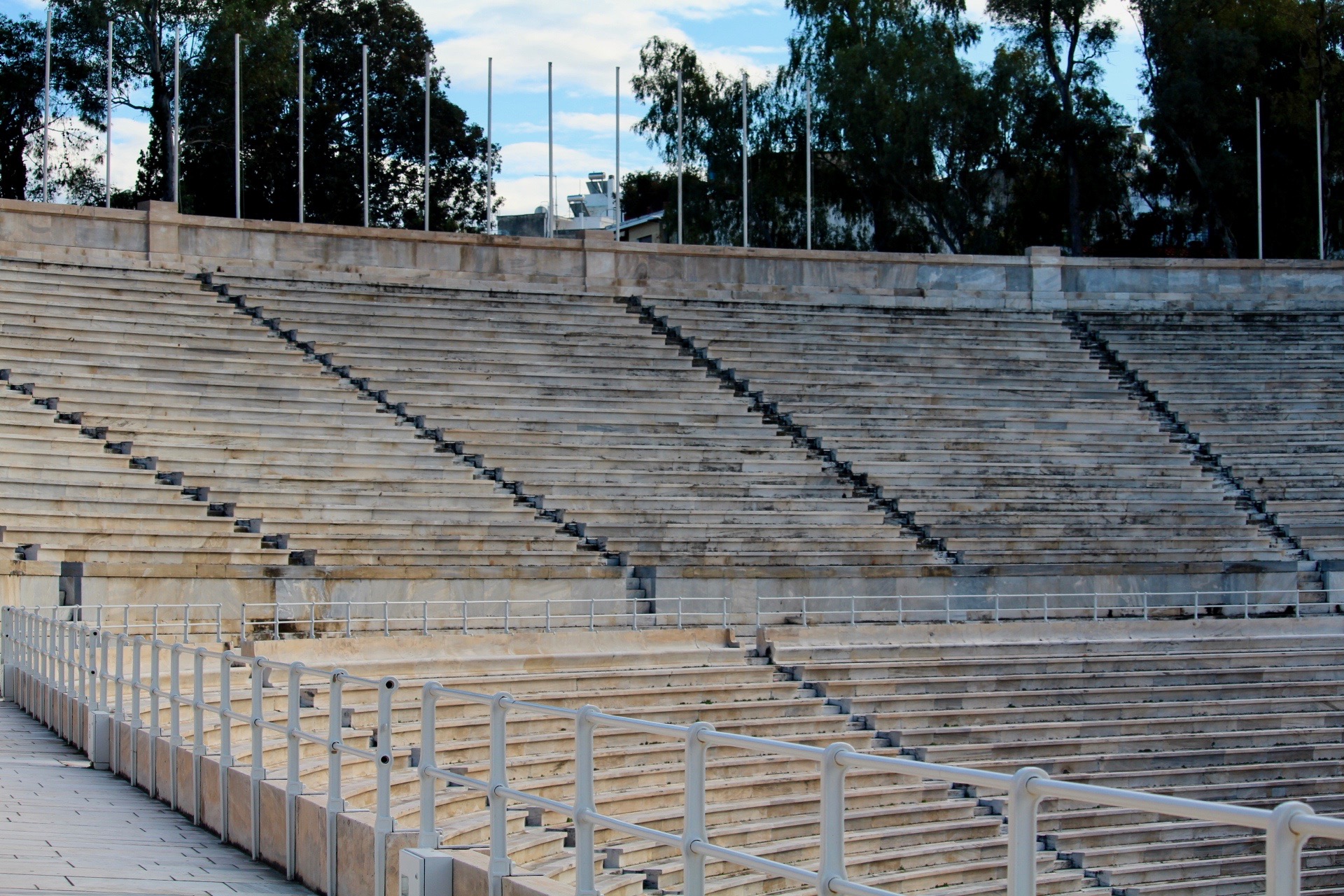Do you feel it?
Ancient sites hold mystique almost intrinsically, and often you are asked if you feel ‘it’, a concept never truly described. Some say it is a sense of contentedness, some may feel closer to whatever deity they worship, but yet others may feel nothing special at all in the same place. For all, however, any feeling they receive is often linked to religion, what we have been studying in class.

From the top edge of the Panathenaic Stadium in Athens, just across a small street from the College Year in Athens headquarters (our host program), you can see the stars, and a moon high in the sky, not low on the horizon as viewed from our PLU vantage. Constellations; Gemini, Orion, Cassiopeia, and others all visible from our home here in Greece. Humans have followed the stars for ages, using them as guides for navigation and as representations of godly things. Many stars carry with them the weight of human myth that has attached itself to their glowing form. If you sit and relax into your viewing, it is easy to imagine what ancient people did.
In Ancient Greek mythology, Queen Cassiopeia claimed that her and her daughter were more gorgeous that the Nereids, the children of Poseidon. Infuriated, he sent the sea monster Cetus to terrorize the coast of Cassiopeia’s lands. She then consulted an oracle, who stated that she must sacrifice her daughter to appease the wrath of the god. Cassiopeia’s daughter Andromeda was then chained to a rock to await her death. To her aid came Perseus, who killed the beast and took Andromeda to be his wife. However, Poseidon was unhappy that Cassiopeia had escaped unpunished. He tied her to a chair high in the heavens, so that she would hang upside down from it for half the time, now a permanent fixture of twinkling lights.

Stories like the one of Cassiopeia can be rather morbid, yet the tales of heroes astoud and awe even older individuals. After all, ancient myths are still used in storytelling today (Lord of the Rings is a personal favorite of our professor). To some, those stories and conversations are what create the ‘it’ feeling. In our modern setting, we may encounter these stories only a few times in our life and it may be difficult to connect with them.
I wonder what ‘it’ might have felt like to those who grew up in those myths and witnessed what was happening. What might the woman working as the Pythia at Delphi have considered in her mind? Did she have a place outside the temple she loved to go, similar to the bench I found aptly placed on an edge above the main sanctum? Did the pungent yellow flowers draw her eye? And, did she know that her prophecy may have been simply caused by odors from the crevasse in the earth upon which her pedestal was placed? For the athletes at the Panathenaic Stadium, so close to my home away from home, did they consider who might be walking in their footsteps centuries into the future? Millenia? Were they performing only for the gods, or was a part of them appreciating the sport or the music simply for what it is? And for all those in the ancient world, did they know they were speaking a language that would be replaced so easily, or that their houses and stores would crumble and fall in the blink of an eye?

I have one final question.
Can you feel it?









